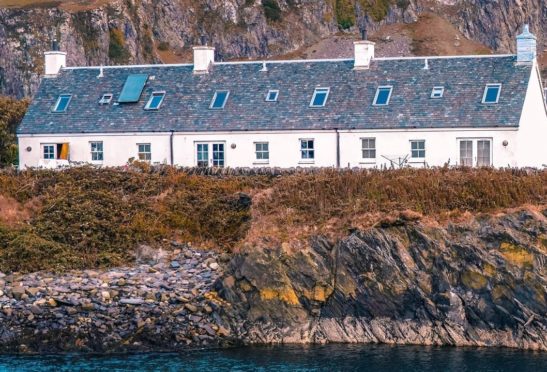
First-time buyers now account for the majority of house purchases with a mortgage – but aspiring home owners face raising a £32,000 deposit, rising to £110,000 in London.
In 2018, people taking their first step on the property ladder accounted for just over 50% of all home purchases using a mortgage, the Halifax First-Time Buyer Review found.
Halifax said it was the first time since 1995 that first-time buyers have accounted for more than half of home purchases with a mortgage.
In 2017, first-time buyers had made up 49% of house purchase loans, and in 2010 the proportion had been just 37%.
Halifax used information from UK Finance to make the findings, as well as its own house price database and Office for National Statistics (ONS) earnings figures.
The number of first-time buyers has nearly doubled over the past decade, from 192,300 in 2008 to 372,000 in 2018.
But aspiring buyers have faced an uphill struggle trying to keep up with surging property prices.
The average price paid for a typical first home has jumped by 39%, from £153,030 in 2008, to £212,473 in 2018, Halifax found.
Terraced houses, closely followed by semi-detached properties, have continued to be the first-time buyer’s home of choice over the past decade, it said.
And while there has been a general increase in first-time buyers year-on-year across the UK, in Scotland and Wales numbers have fallen, the research found.
In Scotland there were 35,100 first-time buyers in 2017 and 34,300 in 2018.
And in Wales there were 16,600 first-time buyers in 2017 and 16,400 in 2018 according to Halifax’s estimates.
Across the UK, first-time buyers are putting down an average deposit of £32,841, with those in London stumping up £110,656, while those in Wales are paying the lowest average deposit of £16,449.
A first-time buyer would be close to being able to buy a home outright in the North East of England or Northern Ireland for the same money it would take just to raise a deposit in London.
In the North East, the average first-time buyer home is £126,104 and in Northern Ireland it is £129,615.
Russell Galley, managing director at the Halifax, said: “New buyers coming on to the ladder are vital for the overall wellbeing of the UK housing market, and the continued growth in first-time buyers shows healthy movement in this important area – despite a shortage of homes and the ongoing challenge of raising a deposit.
“Last year was the first year that first-time buyers accounted for the majority of the market since 1995, which shows that the factors reducing some of the associated costs – such as continued low mortgage rates and stamp duty – are supporting the increasing number of people taking their first step on to the property ladder.”
The most affordable local authority districts in the UK for first-time buyers are all in the North West and Scotland, Halifax found.
Pendle in Lancashire and Copeland in Cumbria were identified as the most affordable places, with homes there costing 2.6 times local earnings on average.
In Scotland, East Ayrshire was identified as the most affordable area, with homes at three times local gross earnings.
Brent in London was identified as the least affordable area, with first-time buyer property prices at 13.3 times local earnings typically.
Oxford was the only place outside London on the top 10 list of least affordable areas for first-time buyers.
A first-time buyer in Oxford faces needing to find 10.9 times the average local wage to cover the cost of a home.
Here are the average house prices, deposits in cash and deposits as a percentage of the purchase price that first-time buyers paid in 2018, according to Halifax:
– North East, £126,104, £17,112, 14%
– Yorkshire and the Humber, £142,638, £19,827, 14%
– North West, £149,089, £21,449, 14%
– East Midlands, £165,399, £24,791, 15%
– West Midlands, £174,908, £26,513, 15%
– East Anglia, £210,874, £36,611, 17%
– Wales, £144,542, £16,449, 11%
– South West, £210,200, £37,128, 18%
– South East, £279,349, £52,136, 19%
– Greater London, £426,857, £110,656, 26%
– Northern Ireland, £129,615, £18,077, 14%
– Scotland, £141,671, £19,952, 14%
And here are the 10 most affordable places for first-time buyers, with the average house price-to-earnings ratio, according to Halifax:
=1. Pendle, North West, 2.6
=1. Copeland, North West, 2.6
3. East Ayrshire, Scotland, 3.0
=4. Inverclyde, Scotland, 3.1
=4. South Ayrshire, Scotland, 3.1
6. Barrow-in-Furness, North West, 3.2
=7. Hyndburn, North West, 3.3
=7. West Dunbartonshire, Scotland 3.3
=7. West Lancashire, North West, 3.3
10. South Lanarkshire, Scotland, 3.4
And here are the 10 least affordable places for first-time buyers, with the average house price-to-earnings ratio, according to Halifax:
1. Brent, London, 13.3
2. Hackney, London, 11.8
=3. Newham, London, 11.0
=3. Hillingdon, London, 11.0
=5. Waltham Forest, London, 10.9
=5. Oxford, South East, 10.9
=7. Southwark, London, 10.3
=7. Haringey, London, 10.3
=9. Barnet, London, 10.0
=9. Harrow, London, 10.0

Enjoy the convenience of having The Sunday Post delivered as a digital ePaper straight to your smartphone, tablet or computer.
Subscribe for only £5.49 a month and enjoy all the benefits of the printed paper as a digital replica.
Subscribe